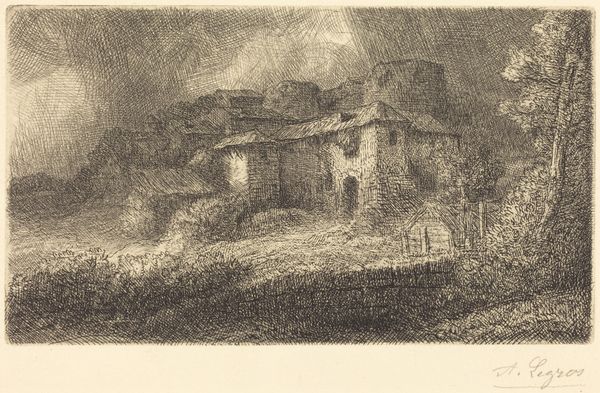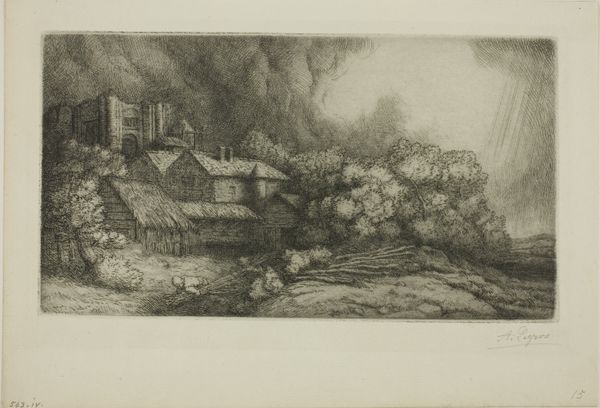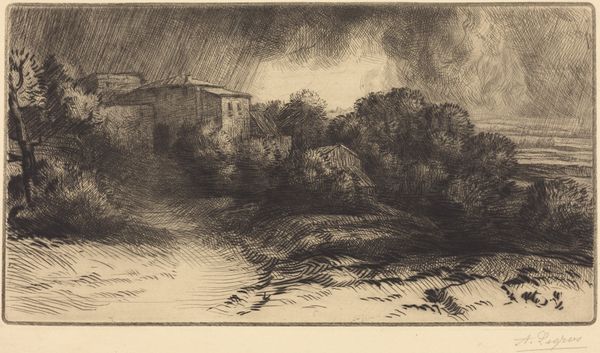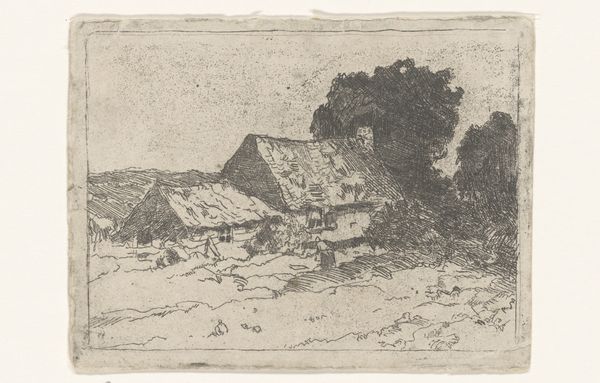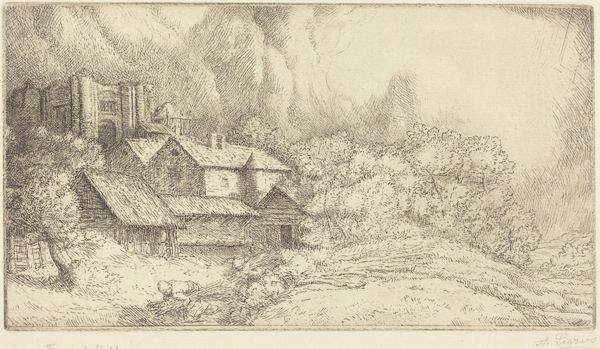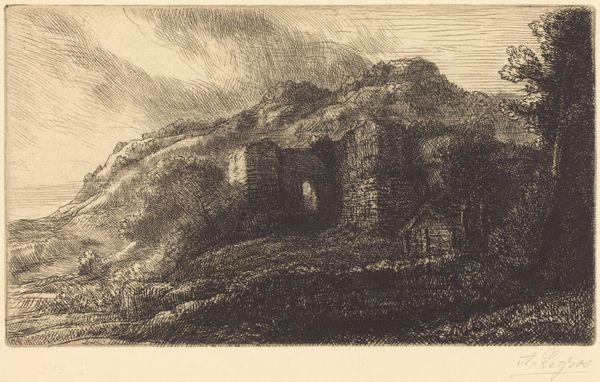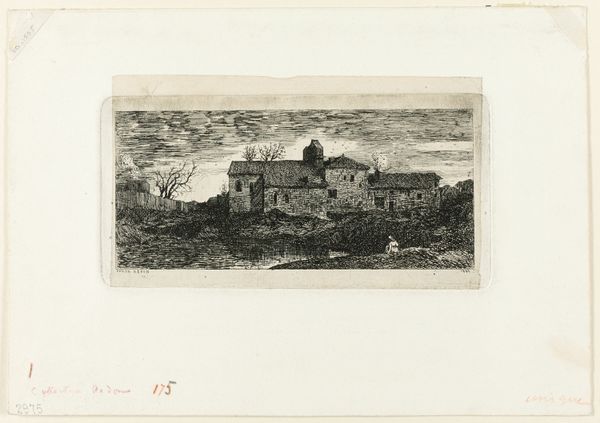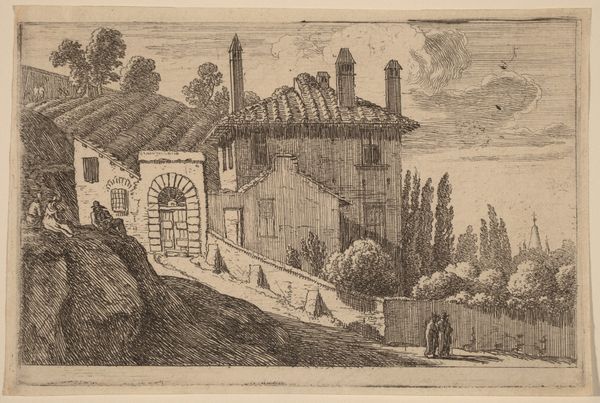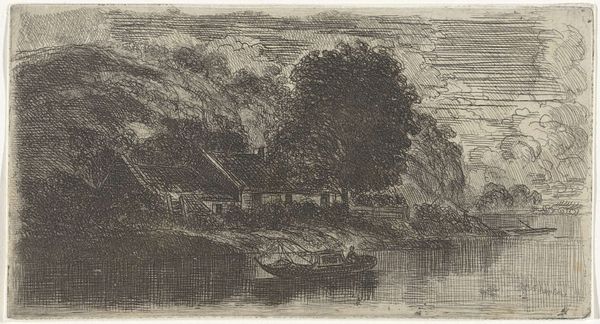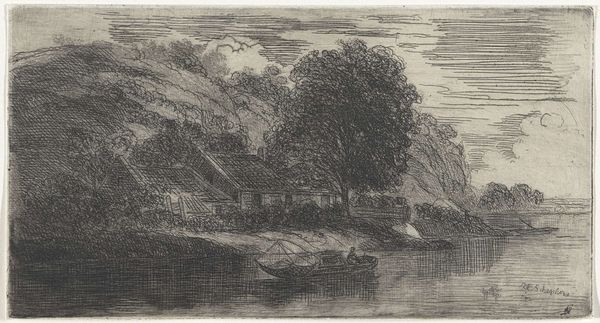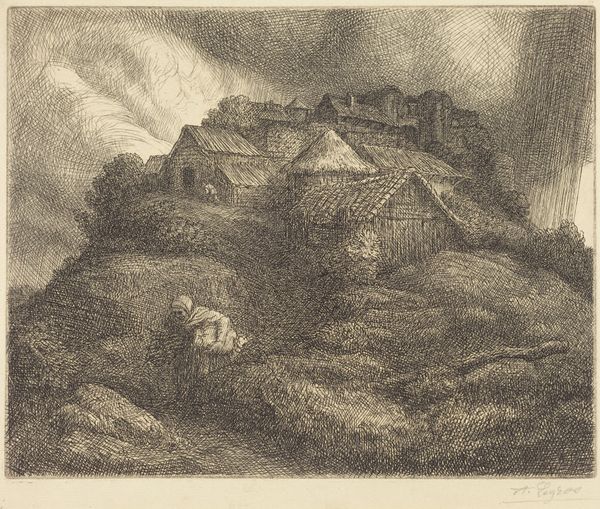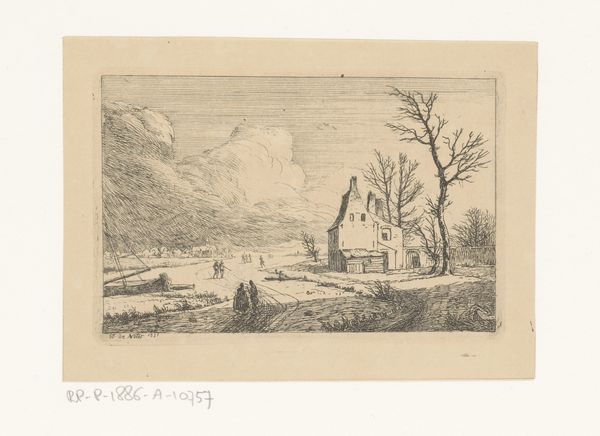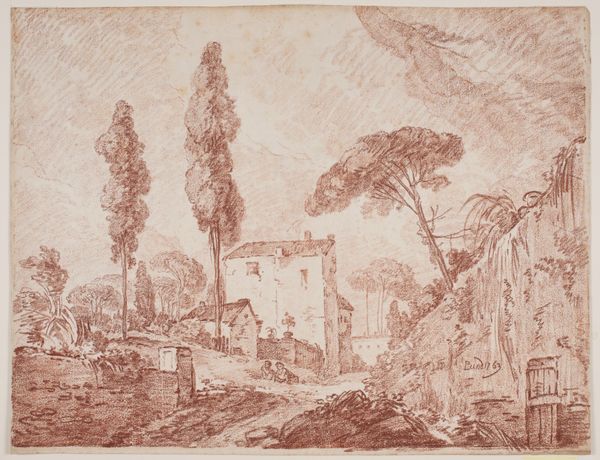
drawing, print, etching, paper
#
drawing
# print
#
etching
#
landscape
#
paper
#
france
#
realism
Dimensions: 216 × 287 mm (plate); 266 × 353 mm (sheet)
Copyright: Public Domain
Curator: This is Alphonse Legros' etching, "The Abbey Farm," dating back to around 1893. It's currently part of the Art Institute of Chicago's collection. What are your initial thoughts on this work? Editor: Immediately, I’m struck by the dramatic use of light and shadow. There's a palpable tension, almost as if a storm is just about to break over this rural scene. It’s so moody and full of labor. Curator: Indeed. The etching process itself – the way Legros manipulated the copper plate with acid to create these lines – speaks to a meticulous, almost industrial, process. It reveals a tension between the handmade quality and the mechanical reproduction inherent in printmaking. What about the subject itself? The buildings, the figure? Editor: Well, consider the socio-political climate. Legros was working at a time of significant change in French agriculture and labor. We're seeing rural populations grappling with the shift towards industrialization. That lone figure tilling the land seems almost anachronistic against the looming structure of the abbey. I wonder what role institutions like the church had in all of it? Curator: It certainly raises questions about the relationship between these agricultural workers and the institutions that govern them. What is striking to me is how Legros manages to elevate everyday labor into a noble subject, while also hinting at its hardships. Think of all of the tools needed, the skills, and what the local availability of material had to do with its production. Editor: Precisely. And if we consider the market for prints at the time, these images would have been consumed by a burgeoning middle class eager to connect with idealized visions of the countryside. The consumption of art becomes enmeshed in these same dynamics. Was this abbey presented romantically as so many other buildings were at this time, perhaps offering the owner opportunities? Curator: A valid point. There's definitely an element of romanticism here. But Legros doesn’t shy away from depicting the reality of labor either. He challenges any simplified notion. Editor: He prompts us to consider not just what is depicted, but *how* it is depicted and *why*. The way museums then and now present artworks to be looked at, considered important. What happens behind closed doors, what's being done by all that unseen labor in this building depicted... Curator: A very thoughtful approach, making this etching not just a beautiful scene, but also a reflection on the structures shaping life at the time. Editor: Yes, and it encourages us to see beyond the picturesque, questioning the relationship between art, society, and power dynamics of imagery even to this day.
Comments
No comments
Be the first to comment and join the conversation on the ultimate creative platform.
